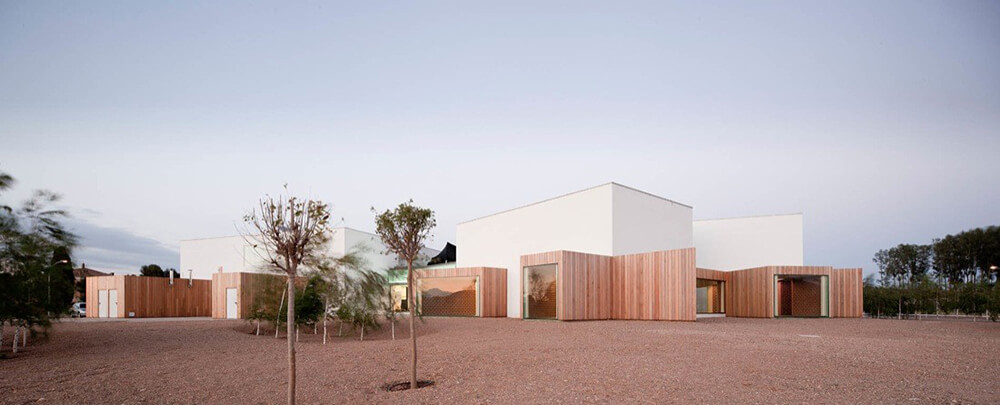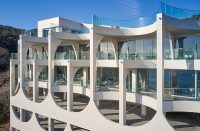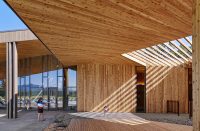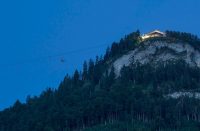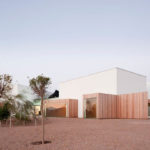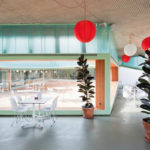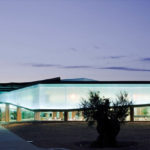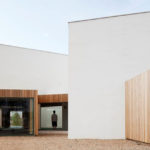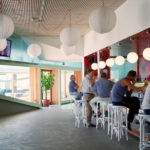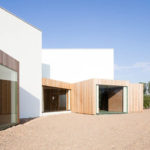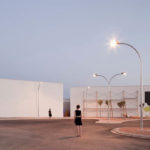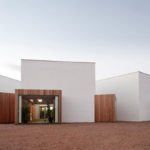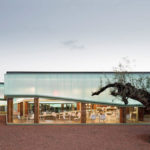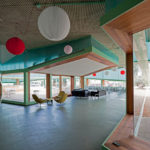Architect(s): Langarita-Navarro Arquitectos
Address: La Almunia de Doña Godina, LA ALMUNIA DE DOÑA GODINA, Spain
Latitude/Longitude: 41.493658,-1.375498
Photographs: Miguel de Guzmán
Roadside restaurants are not found very often within the increasingly prestigious restaurant world. Such places have a superposed condition as an infrastructure adapted to the commercial, informational and social flow of the road network on mythical scenarios taken from road movies and literature. In recent years, there is been an increase a development in their structures in order to offer services for large-format events without this having involved anything more than a change in scale. The project rose to the challenge of changing this trend by building a structure capable of managing a programme subject to constant reorganization. That happened with the presence of a heterogeneous public and the expectation of diverse uses, a flexible space capable of setting itself up as a scenario for almost any type of activity. The transformation of a roadside restaurant into a versatile infrastructure for events and meals was the goal.
Lolita is located in La Almunia de Doña Godina, junction 270 of Autovía A-2, in a strategic position from a logistical point of view between the commercial routes of Madrid-Barcelona and Valencia-Bilbao, just a few kilometers from several towns and in the vicinity of the university campus of the EUPLA. The building seeks to exploit a variety and mixture of activities, on one hand attending to the different groups of users and on the other to the diversity of lengths of stays. They can go from the 10 minutes spent by the occasional visitor on a coffee break to the lunch taken by the regular patrons that follow the commercial routes, the compulsory rest times of the haulage drivers, the afternoons of the students who take advantage of the Wi-Fi networks or the full day spent by guests at a celebration.
The project is configured as a cumulative space of experiences that, by linking two autonomous and differentiated systems, explores the compatibility of the open-plan model with one of specific and designated spaces.
A continuous space of irregular geometry perforated by patios where the camp-style grouping of furniture by the soft system and the flexible lighting enable different ways of organizing the space. The interior is characterized by a patterned/semi-perforated concrete slab and by the wood, glass and polycarbonate of the walls. A dynamic and variable relationship with the exterior space is established through the façade, a variable-section double strip, facilitating the full view of the surrounding landscape. At the same time, it creates in the interior a complex play of reflections and transparencies.
Specialized boxes made from 8-metre-long alveolar panels and brick walls build up the rigid system that house specific and to some extent ritualized programmes. Combining the criteria of the programme with elements taken from popular culture customizes the spaces in the interior. The system is connected with the surroundings through well-chosen and fragmented vistas, generating a hermetic image that allows the large blind surfaces to be used as a support for road signage.
In the project, a new installation in the landscape that accrues images from nearby reference points (industrial premises, greenhouses, sheds, improvised lorry parks, road signs) is built by the grouping of systems in order to expand the concept of a road facility and thus situate it closer to that of a public infrastructure.
Text description provided by the architects.
Project architects: María Langarita and Víctor Navarro
Collaborators: Marta Colón, Cristina Garzón, Roberto González, Juan Palencia, Julia Urcoli
Structures: Mecanismo S.L.
Surveyor: Fernando Cornago
Contributed by Langarita-Navarro Arquitectos

